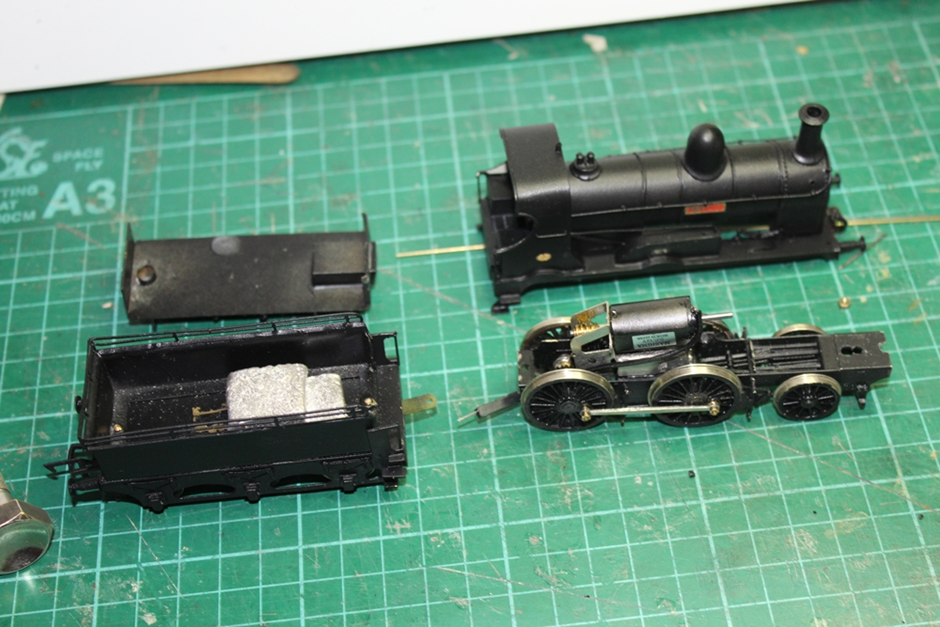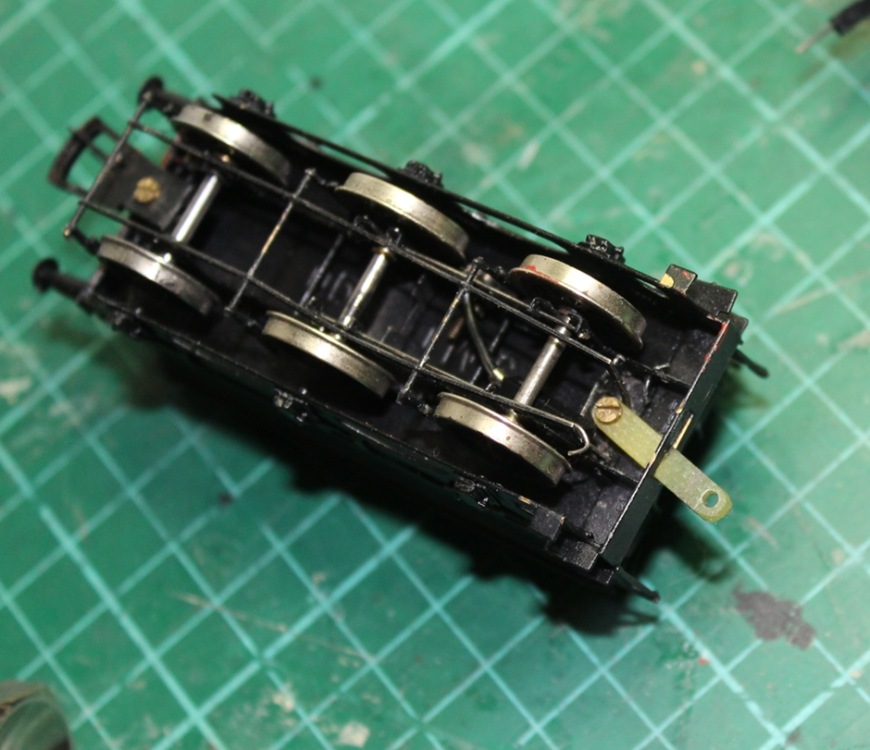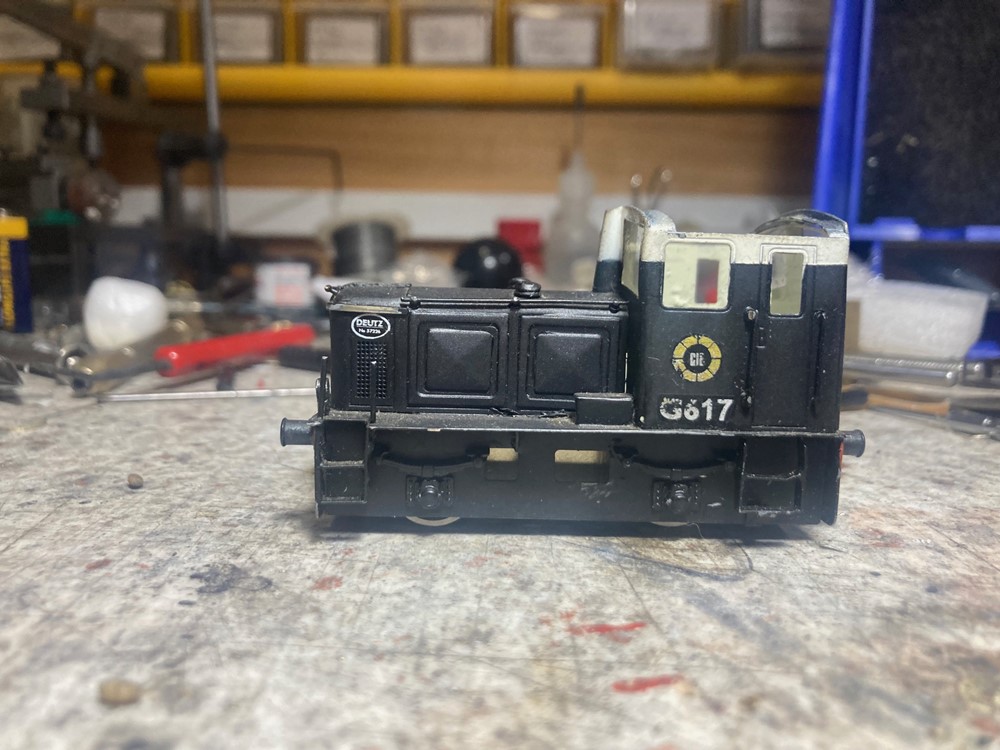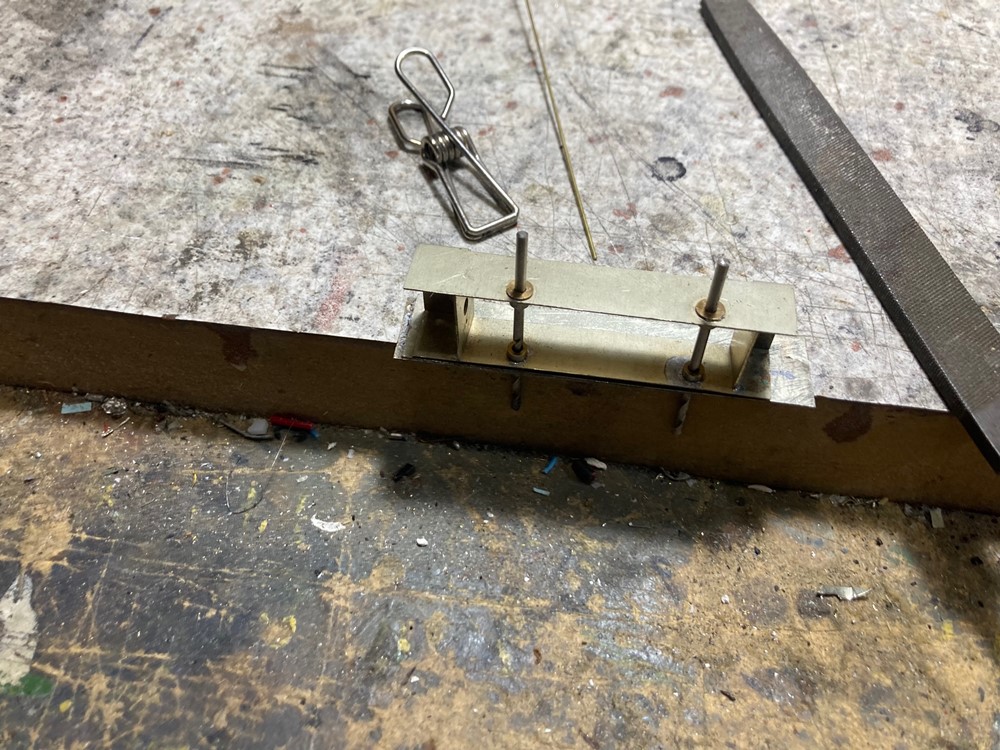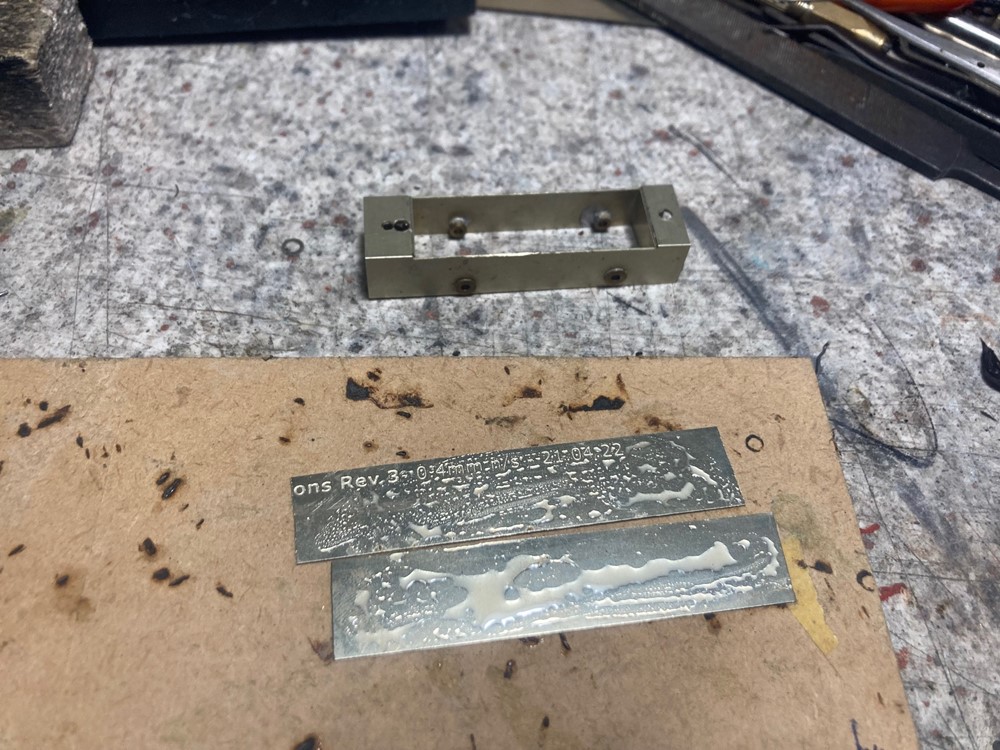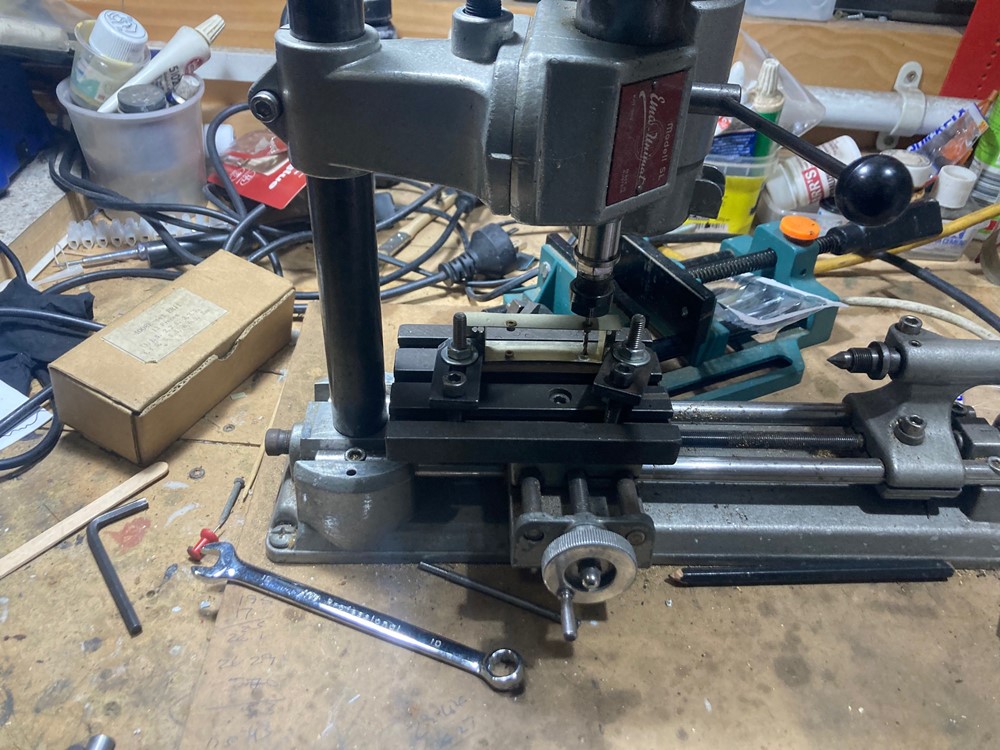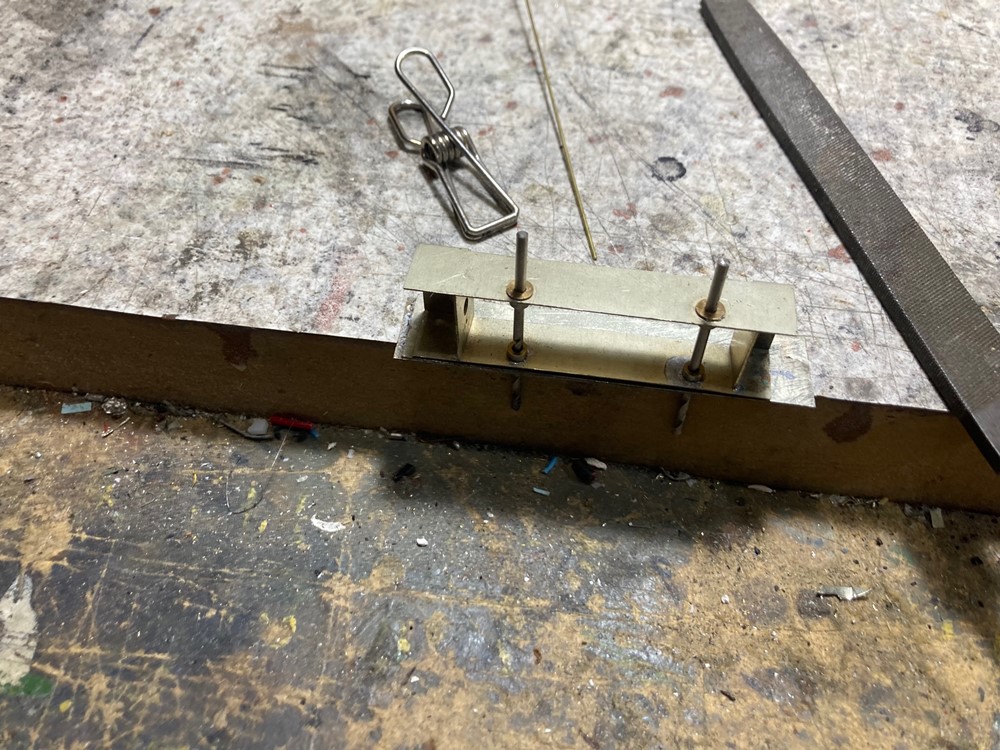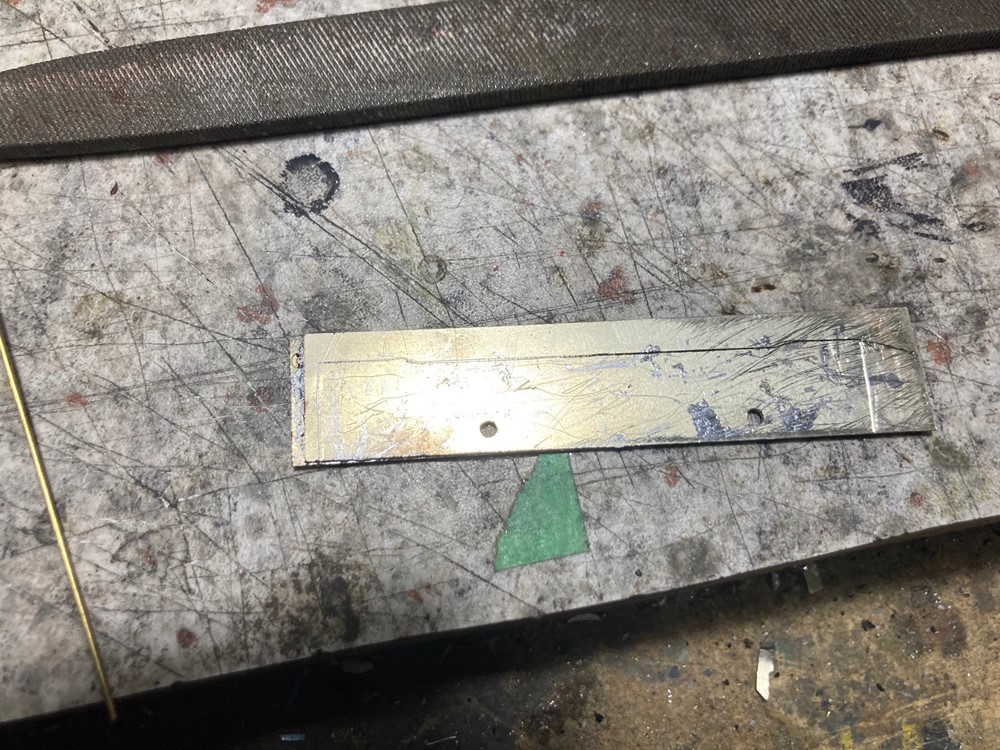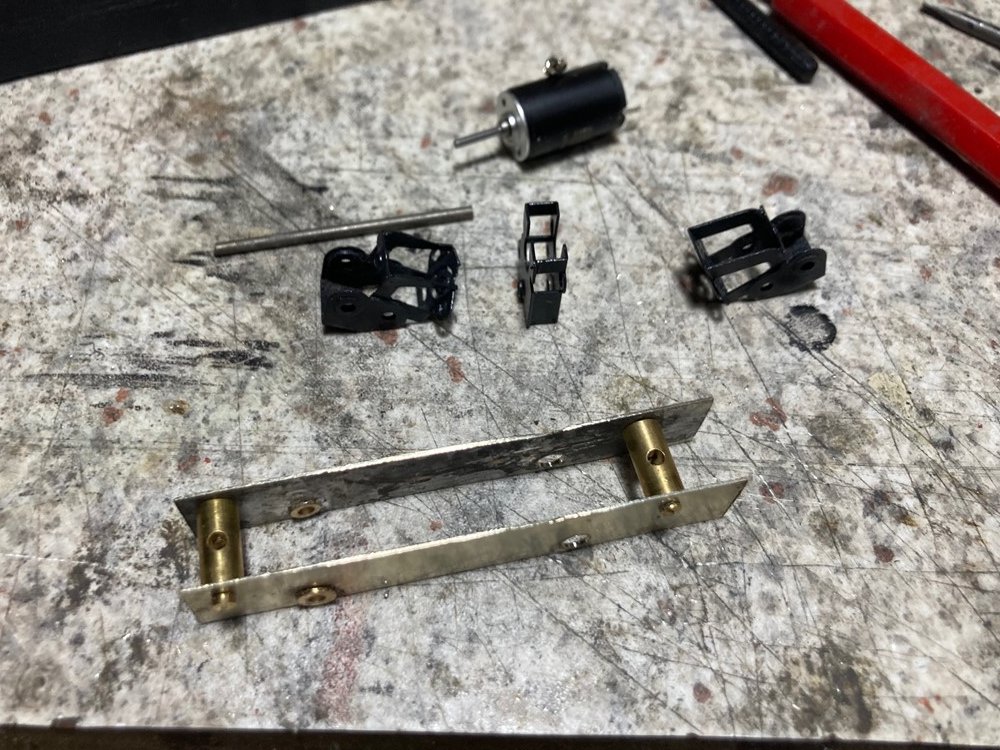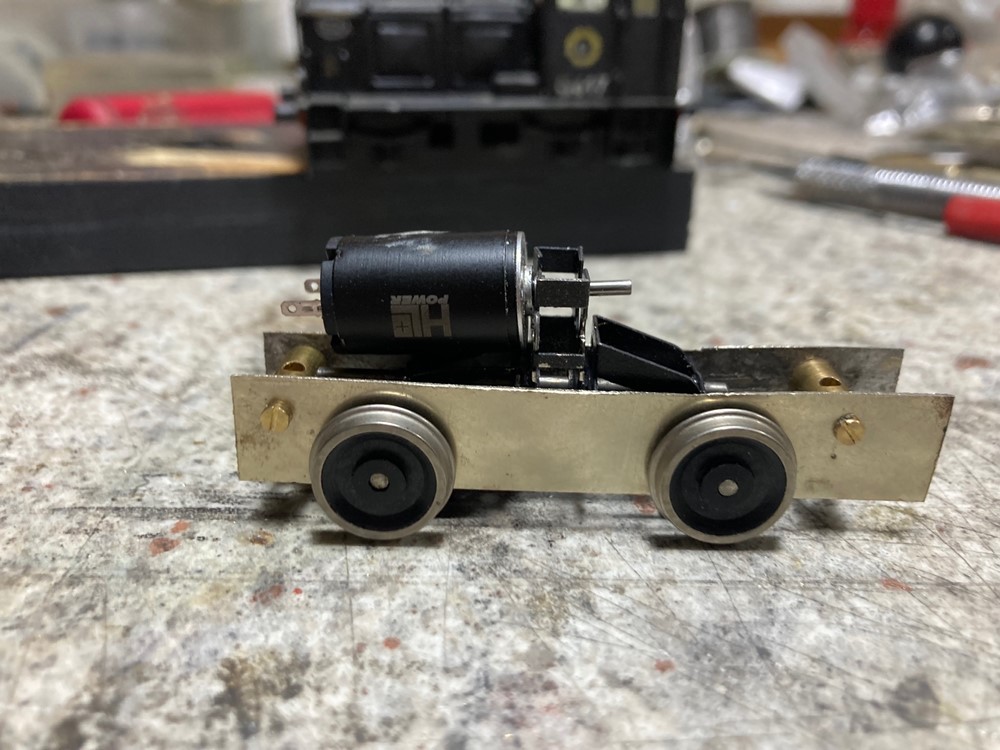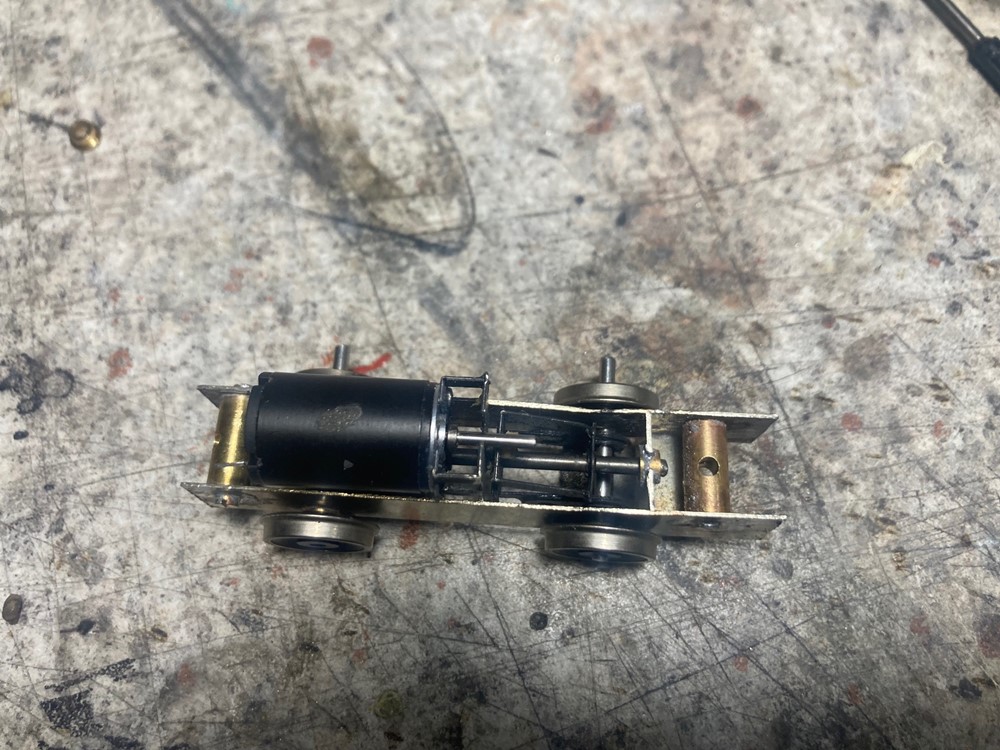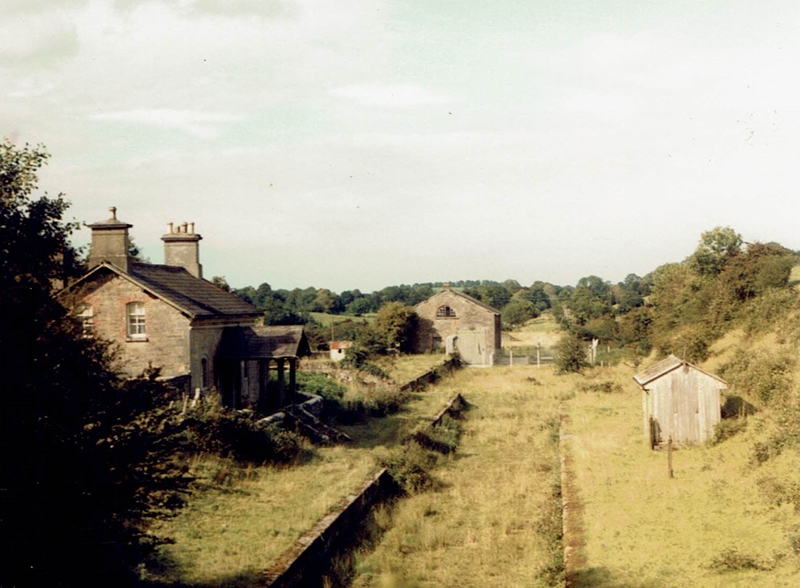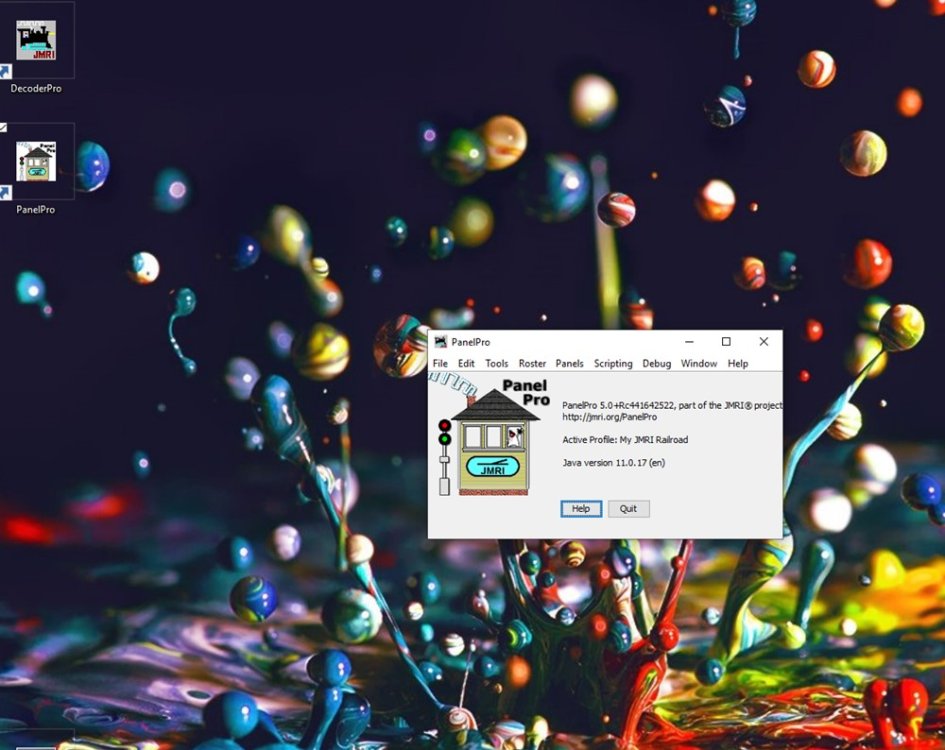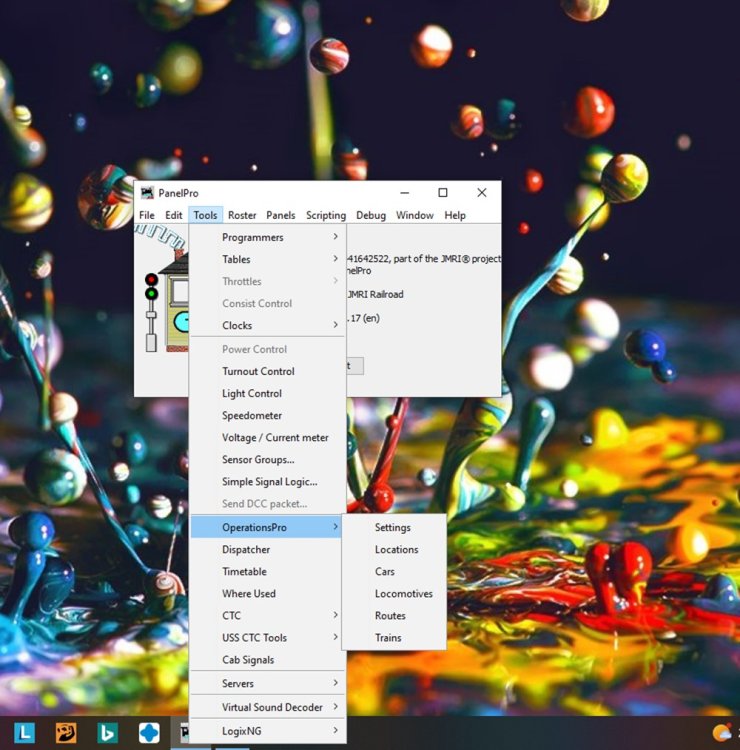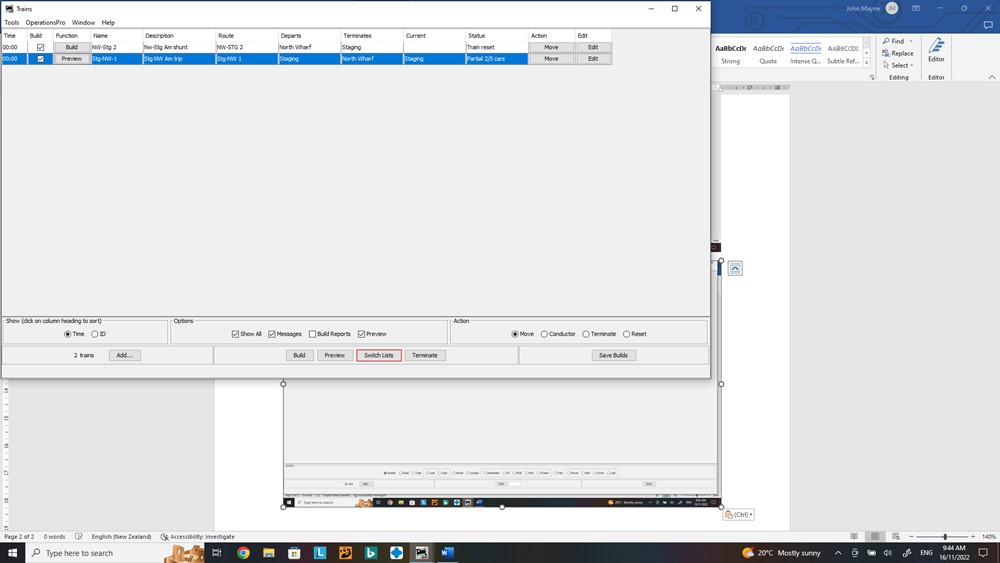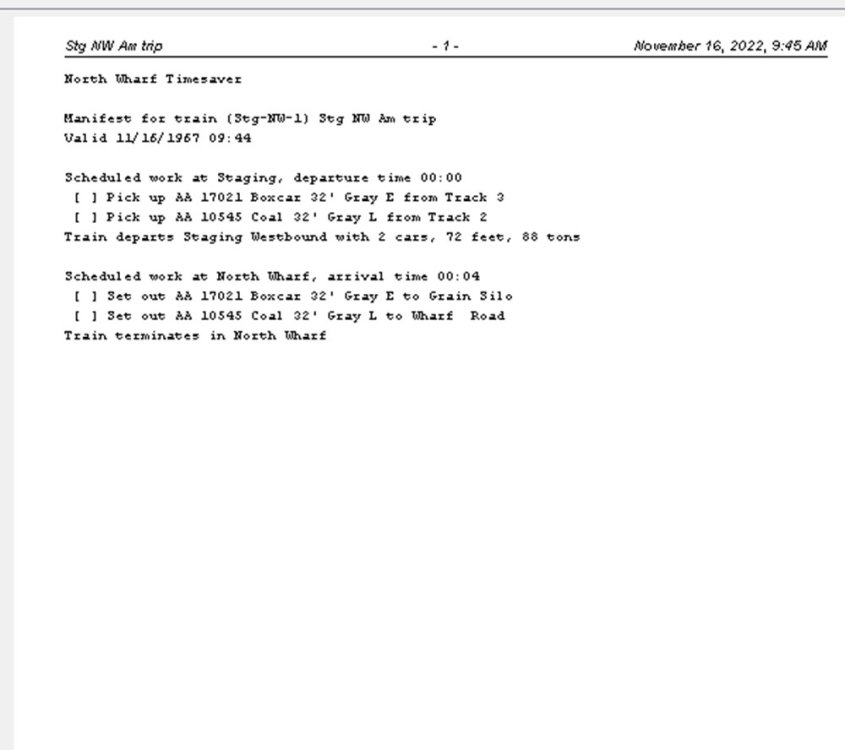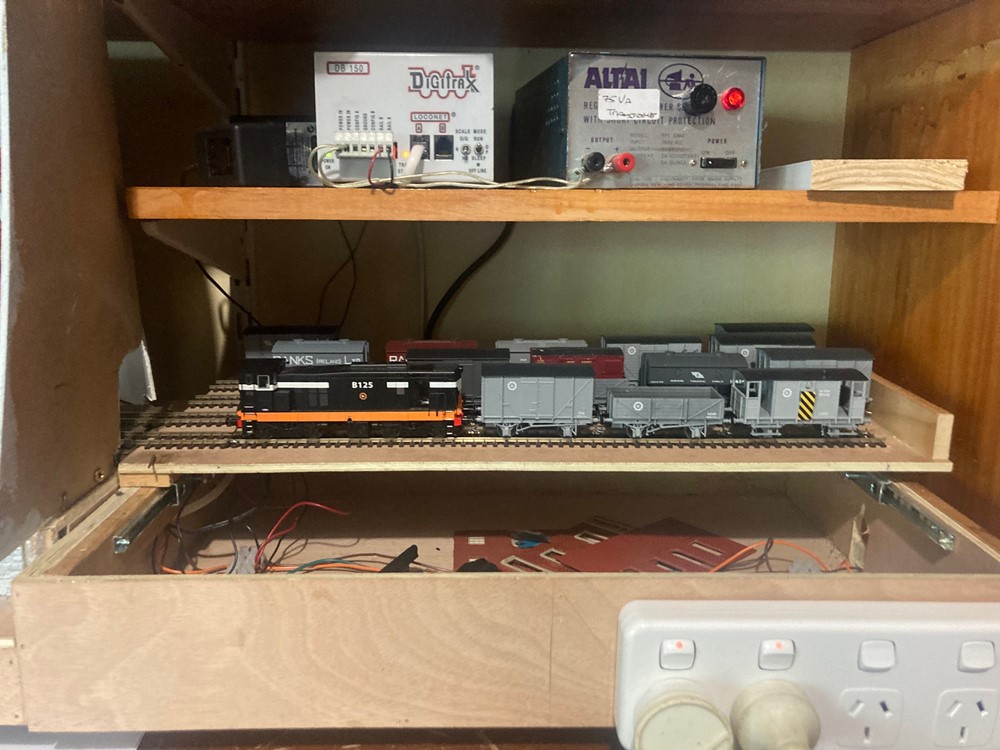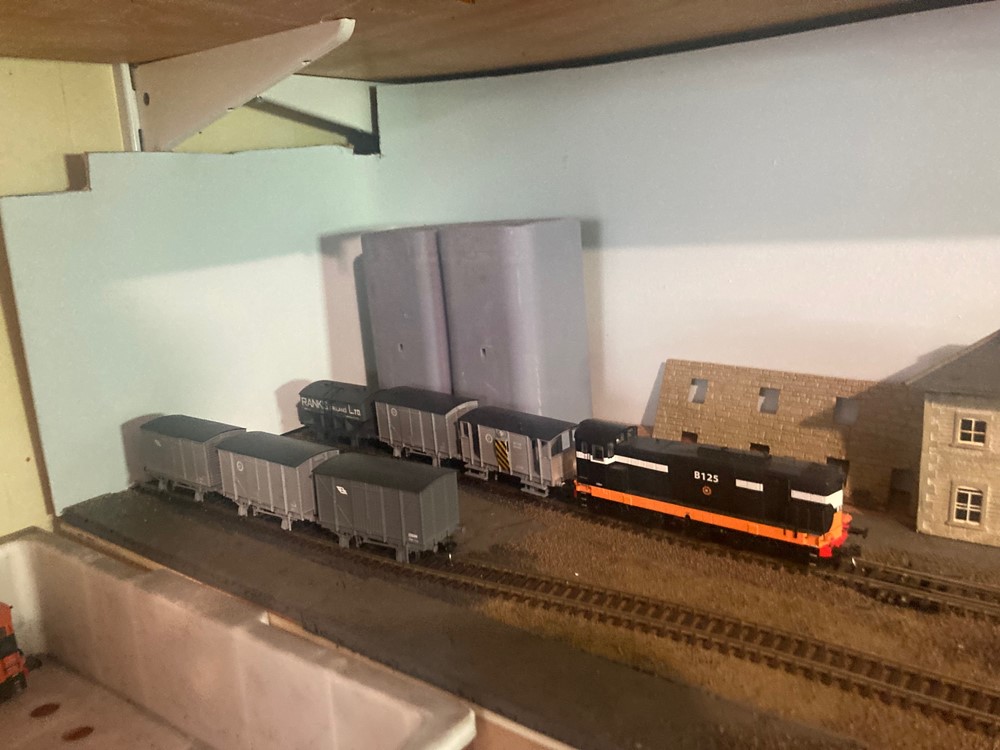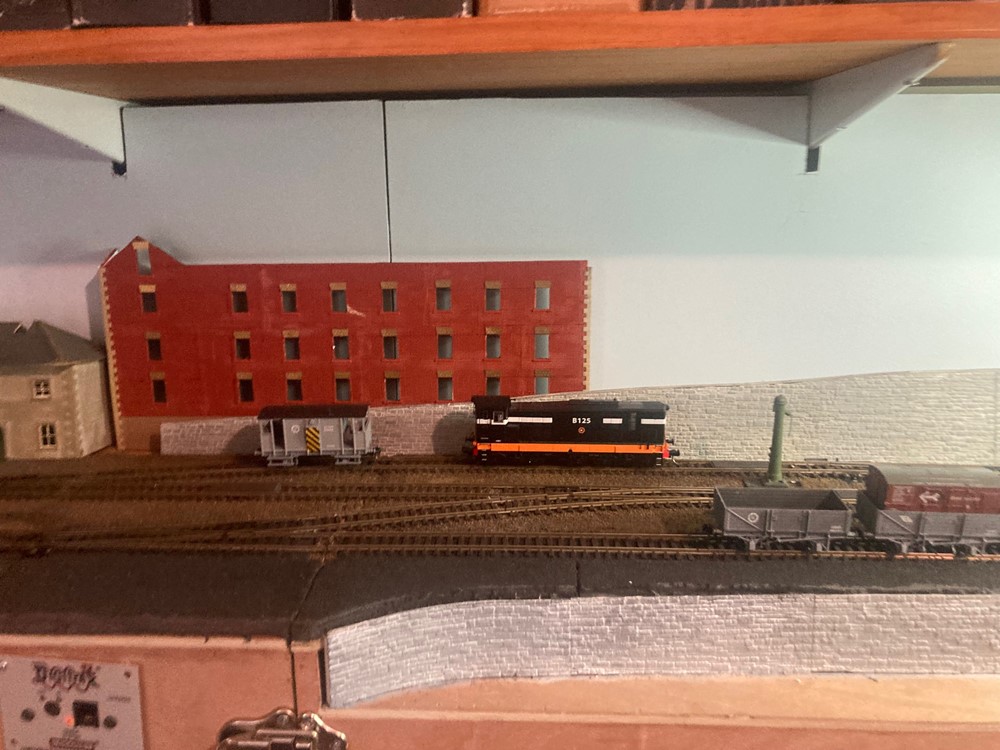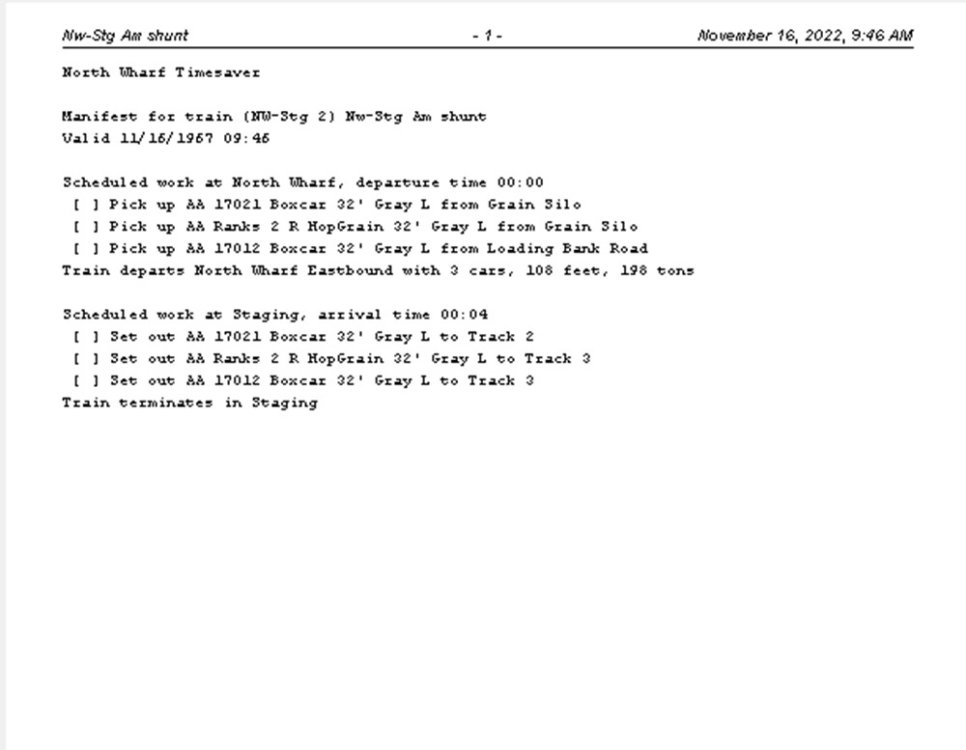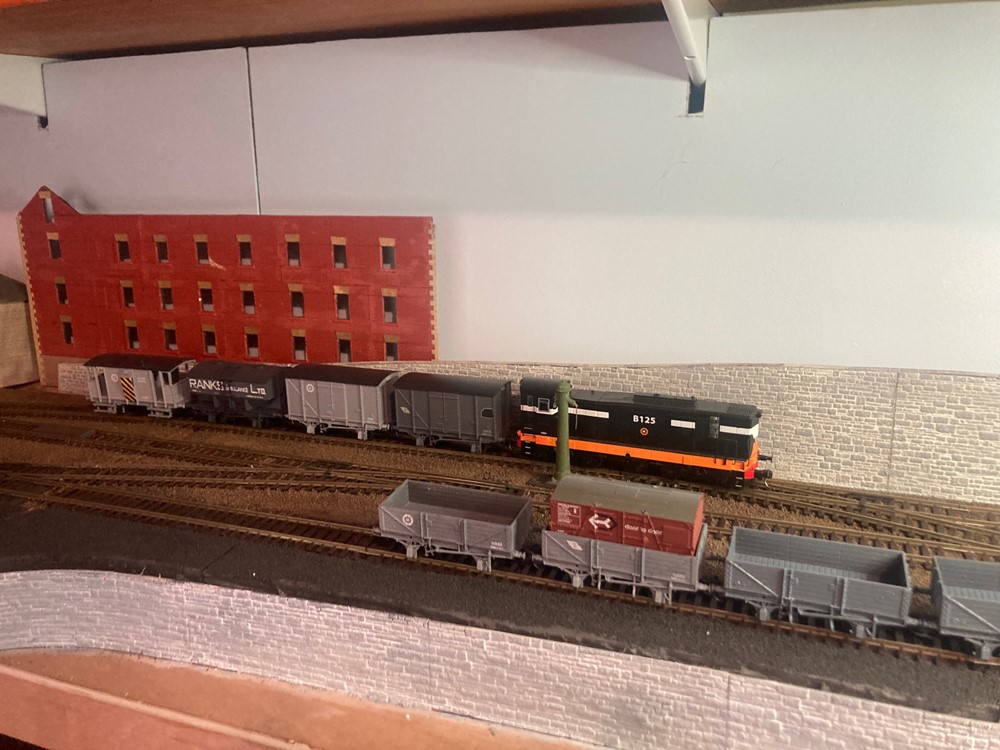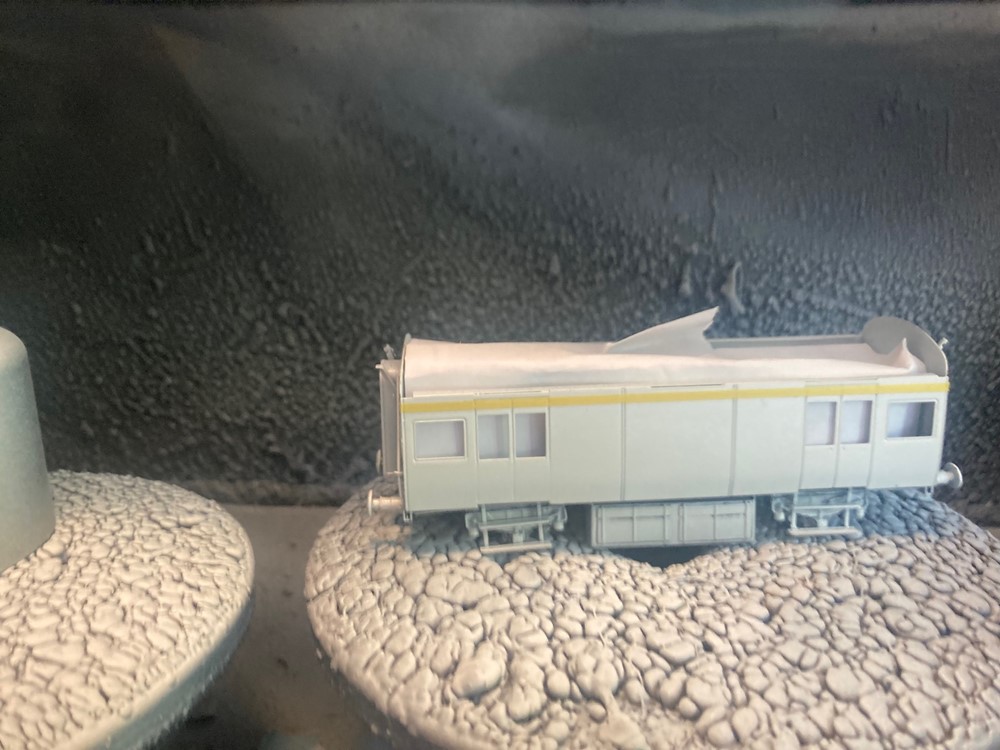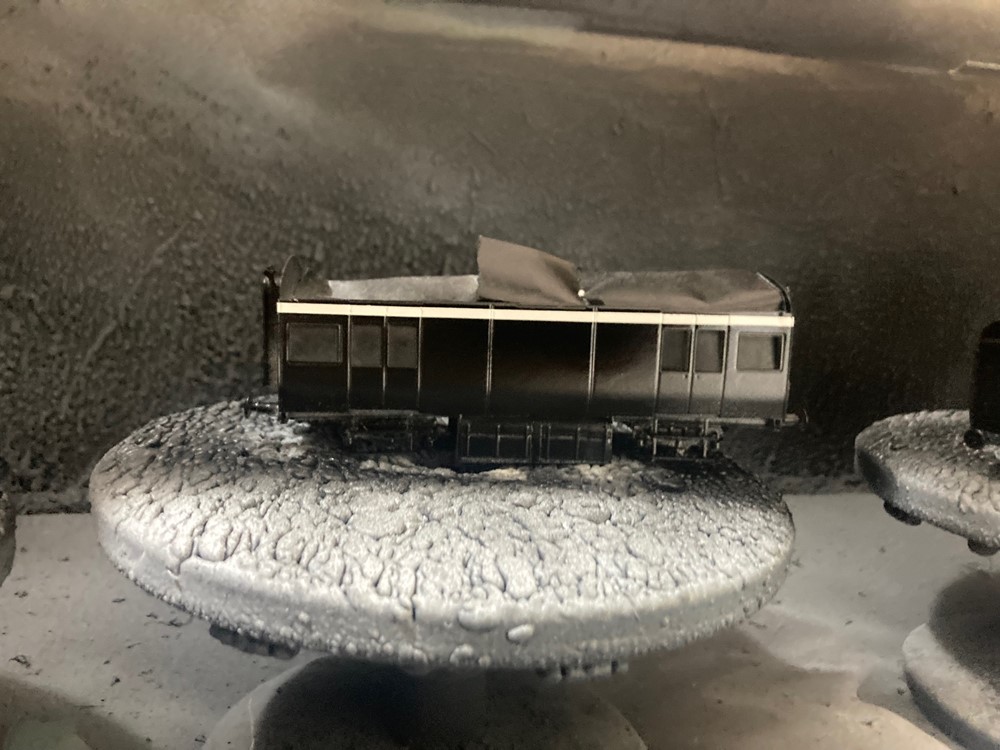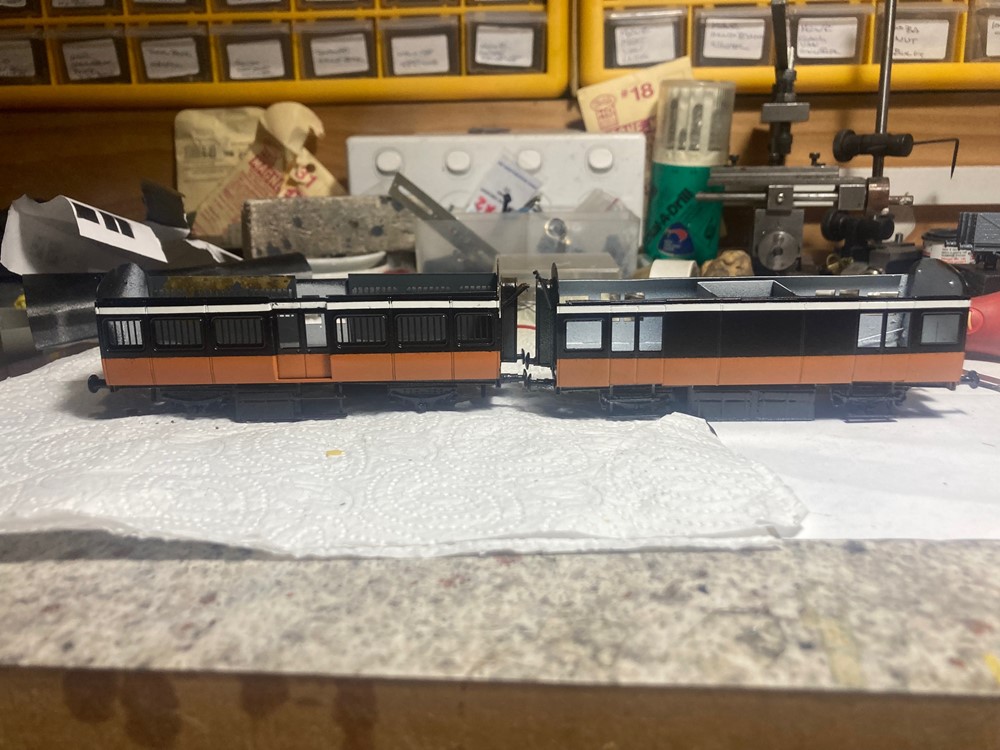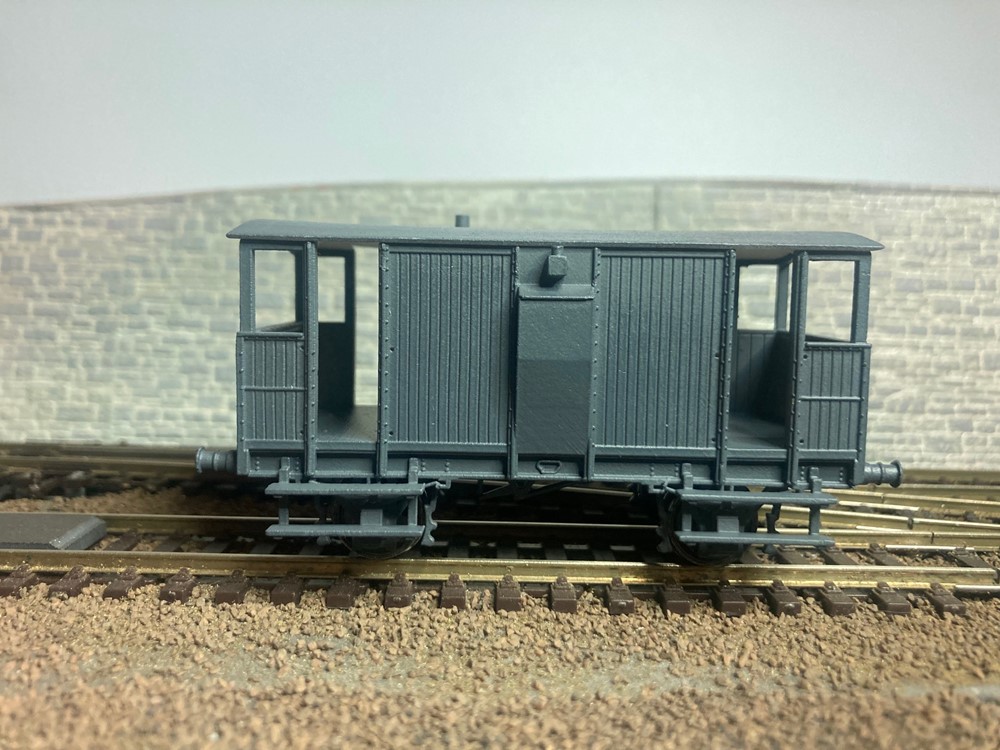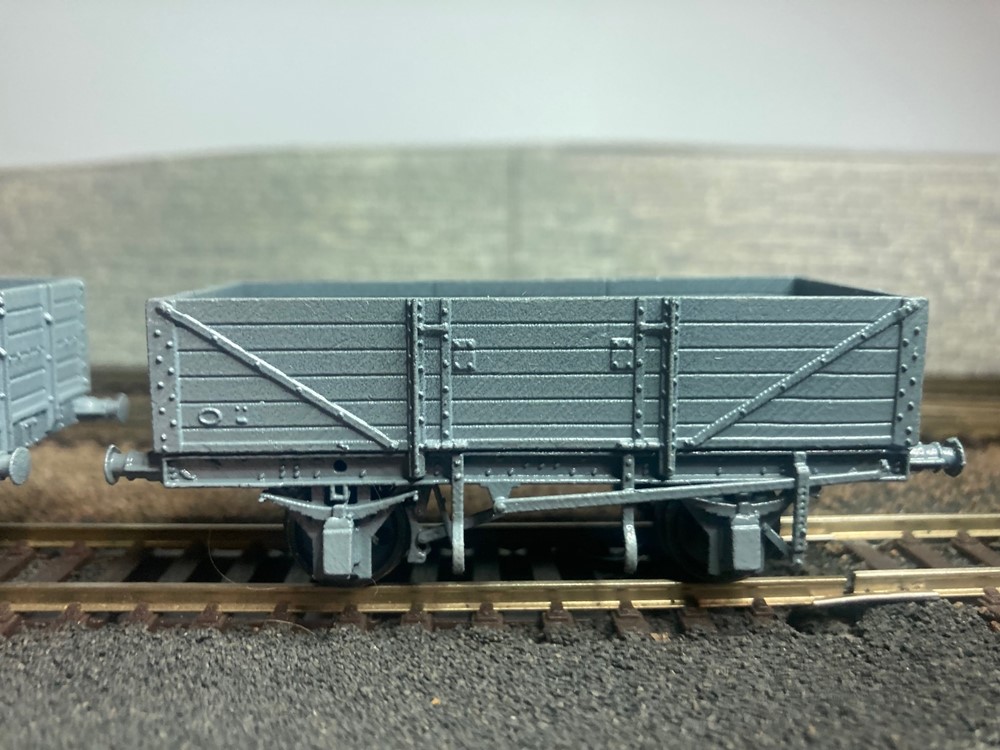-
Posts
4,878 -
Joined
-
Last visited
-
Days Won
119
Content Type
Profiles
Forums
Events
Gallery
Everything posted by Mayner
-
The Silver Fox CIE coaches are based on conventional coaches built at Inchacore during the early 1950s and were quite different in appearance to the Laminate coaches built during the late 50s. While reasonable models (the coaches), Silver Fox omitted the raised detailing on the sides a distinctive feature of early CIE coaching stock. Going back to travelling between Ireland and the UK. I used to travel by boat and train after moving from Dublin to London during the mid 80s was fine if you had plenty of time and were able to take the day time Mail Boat sailings arriving in Dublin or London early-evening or late afternoon. A couple of times I was foolish enough to take the evening sailing from Dun-Laoire and the overnight train arriving bleary eyed in London at around 5:30-6:00 intending to start work at 07:30 but ended up going home and crashing out! London-Holyhead was enjoyable on particularly on weekends not very crowded comfortable MK2 (E)? coaches, cheerful Buffet Car staff and interesting diversions round Brum. and Northwitch due to engine works on the WCML, had one night mare trip on a hot sunny afternoon in the opposite direction, Buffet Car ran out of water and soft drinks at Bangor then blocked for an hour at Hollywell Junction when we discovered the A/C ventilation system was not working. Very fast running and no delays after Holywell Junction Buffet Car re-stocked at Crew. Flew Heathrow-Dublin with Aer Lingus/BA a few times at Christmas, I started flying Luton-Dublin when budget airlines entered the market a couple of years later, I had a job with a company car and it was simpler and less hassle to drive to the airport or Holyhead than take the Tube and BR. I was allowed use the car for non-business use including the holidays and exploring the UK from Cornwall to the Highlands with the odd trip to Ireland in the days before a company car became a serious tax liability. These days I am highly reluctant to fly, though until fairly recently it was basically turn up and go for internal flights in New Zealand, but you needed to allow half a day to check in for an international flight.
-
I had a similar experience with a taxi driver on my first visit to Sydney with the other half who spent many years in the City and was determined to take me round all her old haunts. We arrived at Central station from the Airport had morning tea in a pub near the station and hailed a cab for Surry Hills, the very grumpy driver drove us about 1000 yards to our destination (another pub).
-

Ernies Massive Irish 1930's to 2005 Photo Archive
Mayner replied to Glenderg's topic in Photos & Videos of the Prototype
Interesting the two steam cranes in the exchange sidings possibly a tandem lift transferring locos between the broad and narrow gauge. -
A lot depends on whether you want to get something up and running quickly using readily available models or you are more interested in model making (building models from scratch, kits or modifying rtr model The quickest way to get started in 21mm gauge would be to work to EM standard using re-gauge Murphy Models GM diesels or IRM A Class and IRM bogie wagons, before attempting a kit or scratch building. Modelling the MGWR is going to be challenging and involve a lot of scratchbuilding as no suitable rtr models and very few kits are available. The SSM MGWR convertible wagon would be a good starting point for metal kit assembly, I have produced JM Design etched kits for the MGWR K Class 2-4-0 in late MGW condition, a MGWR Horsebox and a MGWR Fish/Meat Van. I would not recommend an etched loco to an inexperienced builder, it took me several years (trial and error) to acquire the skill, experience and tools to assemble a loco or coach kit to a reasonable standard and I am still learning. Modifying a OO Gauge rtr loco like a Bachmann Pom-Pom or SECR C to 21mm gauge is going to be extremely challenging as there is likely to be insufficient running clearance between the coupling rods and loco body, clearance is tight even with brass kits designed for 21mm gauge such as the TMD/SSM Midland Tank or GNR S class. Another constrict with 21mm gauge is that it can be challenging to fit a 21mm gauge layout in a restricted space as minimum radius curves are larger than in OO and points tend to be longer as shown in Kens comparison of a 21mm gauge B6 and Peco small radius point
-
The C&L 4-4-0T was originally announced by Accuracraft UK in 2019 but seemed to have disappeared off the radar during the past 3 years with the Lawley and a number of British outline locos jumping the queue. It looks like the loco may actually appear this time Accuracraft are accepting pre-orders on their main (USA) site. I placed an expression of interest in a C&L 4-4-0 with the local distributor in 2019, it will be interesting if they follow up.
-

Brookhall Mill - A GNR(I) Micro Layout
Mayner replied to Patrick Davey's topic in Irish Model Layouts
The pick up system used by OO Works picking up power through the loco on one side with the return through the tender or the "American" system was commonly used for tender locomotives. It would be worth while converting the bogie wheels to live axle pick up by fitting "Shorting out Brushes" part 4M52 available from Alan Gibson Works sales@alangibsonworkshop.com or by leaving a message for Colin Seymour on 0044-161-679-1607 The best option to improve running and pulling power is to add weight to the tender and modify the drawbar to transfer weight from the front of the tender to the rear of the loco using 'the weighted tender' system. The simplest step would be to add weight to the cab to check whether it improves running before carrying out modifications to the tender or drawbar. Locos with metal chassis and gearing like the OO Works locos require some 'running in' preferably on a continuous run to allow bearings and gearing to bed in to achieve reliable running as there is less in built slop than rtr diesels with plastic gearing. MGWR 2-4-0 with Weighted Tender weights in front of boiler, below motor and front of tender. Chassis schematic rigid drawbar and floating leading and center axle tender Location of weight in tender. The 2-4-0 continually hauled 21 IRM 4w wagons on test -
Re-powering a Duetz. I built a G611 Class Deutz from a Worsley Works set of parts powered by a Black Beetle motor bogie several years ago, and recently decided to replace the motor bogie with a conventional chassis with a coreless motor driving 2 stage gearing to allow for a more realistic top speed for a shunting locomotive. The Duetz is supplied with a neat 21mm gauge fold up chassis I decided to use the Worsley Works chassis as a template for a scratchbuilt OO gauge chassis using O.4mm nickel silver strip and turned OO gauge frame spacers supplied with a SSM loco kit. First task was to cut two strips over length, thin and solder the strips together before drilling out pilot holes for the axles in the Unimat set as a vertical drill. I then used the Worsley Works chassis as a template for scribing the final frame profile cutting with a razor saw I also used the pillar drill to drill the pilot holes for the frame spacers before separating the two strips of nickel silver Assembled main frames motor and High Level Gear box cradles I am planning to use two High Level Road Runner Compact gearboxes with 60:1 gearing through a layshaft powered by "Tender Riser" with 1:1 step down gearing, I used similar drive systems to power as an Impetus Ruston & Hornsby 88 DS loco during the 1990s. I carried out a test assembly of the chassis to make sure the drive components fitted before soldering the frame spacers in place. Luckily the motor fits within the bonnet/engine housing with space to add some weight. I designed the chassis with one fixed and one rocking axle to improve power pick up. the "rocking axle" is designed to pivot in the gear cradle around the layshaft, it will be interesting to see if it actually works in practice! Its likely to take some time before I can test the chassis under power. I need to source some 2mm-1.5mm brass tube from the UK to sleeve the motor shaft the nylon gears supplied by high level are 2mm bore, which should give me time to find the cab roof, complete the glazing and locate some large diameter buffer heads.
-
The "suspension" and closing of Cavan Branch passenger services was more to do with CIE replacing loss making branch line passenger services with its own road services, than an an effect of partition. Meath Line, Tullow and Cavan Branch passenger services all ceased in 1947 while the GNR continued to operate a relatively frequent Belfast-Clones-Cavan passenger service (4 each way daily) until the closure of the Border Lines in 1957
-
Anthony Burges described CIE's Inny Junction-Cavan line as a 'mouldering branch line" in his pictorial book Railways in Ulster's Lakelands (Colourpoint) which covers the GNR(I), CIE & SLNCR. The Crossdoney photo certainly captures this run-down atmosphere.
-
Victors of Islington (USA & Continental model railway shop) had a 'special offer" for a bundle of American (N gauge) freight cars that was more expensive than buying the same number of cars at the individual price. A fair proportion of new customers would select the "special" assuming it would work out cheaper than buying the same number of cars at the normal price. Shop staff used to get a great kick out of asking customers who wanted to pay for the 'special offer' if they could add up.
-
My first real introduction to "bad language" was from a shunter (busy making up a train) shouting to the signalman at North Wall Granary Cabin to change some points. I was in my late teens at the time working as a trainee engineer/foreman on a construction site at the time so not exactly unfamiliar with strong language One day possibly during a Bank or Postal strike I was told to take the bus into town and go to the Burmah Oil on Alexandra Rd and pay our account (diesel & lube). Needless to say I walked it from Amiens St checking out the Midland and Holyhead Yards before checking out the Granaries from Church Rd Bridge before walking along East Wall Rd to enter the Port, paid the account before checking out the sidings on Alexandra Road, then the long walk back along Sheriff St checking out the Point Yard and another look at the Holyhead and Point Yards before finally taking the bus home. All the North Wall yards and signal cabins were in use at the time full of traditional stock, I think I had one or more afternoon walks to pay the Burmah account during my 1st year or 2 at work
-
Leslie Mc Allister (Leslie 10646 on this group) or Provincial Wagons produces a large range of OO gauge resin kits of traditional Irish 4w wagons including CIE corrugated opens, vans and cattle wagons. I produce 3D printed wagons including CIE Brake Van, 3 versions of the "Standard" GSWR/GSR/CIE van, GSWR/GSR/CIE standard wooden bodied open and a bulk grain wagon https://jmdesignmodelrailways.com/ I had to suspend production in October as our current 3D print contractor is no longer prepared to print some of our models, but have had encouraging results from an alternate supplier and expect to be in a position to accept orders from mid January for delivery Mar-Apl 2023
-
That's one serious Diorama really captures the atmosphere of the station and its surroundings. July 1985 The location was extremely compact for a junction station with the road bridge acting as a view block between the station and goods yard area and the signal box and junction with the Killeshandra Branch. In MGWR days the branch train appears to have run to and from Cavan rather than terminating at the Junction
-

The Official Irish 'Might Have Beens' Thread
Mayner replied to minister_for_hardship's topic in General Chat
Its looks like the LLSR Rathmelton depot opened after the line was extended from Tooban to Buncrana in 1864 and Fahan Point became the railhead/port for the villages on the west side of the lough. Like the Cork Blackrock and Passage the LLSR operated an extensive ferry/shipping service preferring to serve the west side of the Lough by sea rather than going to the expense of building railway lines. -

Great Northern Railway - Ireland / AEC built Railcars
Mayner replied to Lambeg man's question in Questions & Answers
The GWR lead the way in the UK in introducing a fleet of 33 almost identical single unit diesel railcars and 2 power twins excluding the single engined prototype. The GNR 600 Class and later CIE 2600 cars lead the way with the widespread introduction of 3-4 car and longer formation in Ireland and the UK. Internationally railways and manufacturers began to develop diesel railcars from the late 1920s onwards In the United States and Canada railroads Gas-Electric and later Diesel railcars were widely used on light passenger and mail services from the late 1920s onwards. American Car and Foundry produced streamlined single unit and articulated diesel "Moto-railers" from the late 1930s onwards http://www.northeast.railfan.net/self_prop10.html Australian and New Zealand railways began building/purchasing diesel railcars during the 1930s. The 6 NZR "Standard" Railcar introduced in 1938 appear similar in principal to the GWR cars https://en.wikipedia.org/wiki/NZR_RM_class_(Standard) -
2mm pin point wagon axles (with or without the points filed/ground off!) or 2mm bogie axle (EM) from Alan Gibson Works would be the simplest solutions. Gibson Bogie wheels are supplied with plain ended OO and EM axles, wagon and coach wheels are available in OO, EM or S4 on 26mm pin point axles either direct (best phone and leave message for Colin Seymour) on 044 161 678 1607)or through suppliers such as Wizard Models in the UK
-

Two Axel Coaches in Ireland?
Mayner replied to Auto-Train Original's topic in Photos & Videos of the Prototype
It looks like 4w coaches built for Irish companies from the 1860s onwards were similar in length to the Hattons and Genesis coaches as opposed to the shortie 'Stage Coach" style vehicles of the 1840s and 50s like the Ulster or D&K vehicles. The Macroom 4 wheeler 14 appears to be a 25' vehicle possibly built during the 1860s, the gas lighting is likely to be a GSR modification. https://hmrs.org.uk/hmrs-21237--second-class--4-compartments--14ft-w-b--25ft-o-b.html HMRSI 21237 is a Waterford and Central of Ireland 25' 14' wb 4w compartment second ordered from Metropolitan Carriage and Wagon in 1879 The second coach listed is a 6w 3rd ordered from Brown Marshall in 1893 so it looks like the WCIR started acquiring 6w stock before the company was absorbed in the the GSWR. https://hmrs.org.uk/hmrs-29134--4-wheel-passenger-brake-van--15ft-w-b.html HMRI 29134 is a Waterford Dungarvan and Lismore 15' wb 4w Passenger Brake ordered from Metro Camel in 1893 a relatively modern vehicle for a 4wheeler. I put in an enquiry to the HMRS for the WCIR 4wheeler so it will be interesting to see if I receive a response. On an unrelated subject the two ex-WLWR "Castle" 2-4-2T GSWR 267 & 491 are close in outline to the LNWR 5'6" radial tanks which survived in BR ownership into the mid 1950s a potential subject for a close enough UK conversion if anyone brings out a rtr model. The GSWR sold one of the ex-WLWR 2-4-2T to the Cork and Macroom, Inchacore apparently forgot the two locos were identical and classified 267 as F5 and 491 as F6 -

Two Axel Coaches in Ireland?
Mayner replied to Auto-Train Original's topic in Photos & Videos of the Prototype
The Waterford and Central of Ireland and Waterford Dungarvan and Lismore appear to have used 4 w coaches until they were absorbed by the GSWR in the early 1900s Do any clear photos or diagrams of WCIR or WDLR 4w coaches exist? There is an early 1900s photo (EK 10) of a train at Dungarvan with what appears to be WDLR coaches with oil lighting, GSWR 6w coaches were fitted with gas lighting from the 1880s. https://www.waterfordmuseum.ie/exhibit/web/BasicImageSearch/offset/105/subject/_1_7_3_/ The ex-WDLR and WCIR 4 wheelers appear to have been withdrawn before the 1925 Amalgamation, but at least one Macroom 4 wheel coach survived into GSR ownership and was fitted with gas lighting! Irish Standard Gauge Railways ©Tom Middlemass 1981 The CMDR 4wheeler appears to have a 25' body length based on a minimum compartment width of 5' The CMDR was opened in the 1860s its likely that 4w coaches ordered by Irish companies during the 1860s and 70s would of been of similar dimensions and outline to the CMDR coach as opposed to the Ulster and the Waterford Tramore (ex-MGWR) 1st Class Carriages with their 1840/50s 'stage coach' styling. The Tramore 1st was apparently built by Dawson's in Phibsborough for the MGWR and incorporated a compartment with a fold down bed for use as a sleeping compartment. The Hornby & Hattons 4wheelers may not be too far off in terms of overall dimensions for 4w coaches ordered by Irish companies during the 1860s & 70s, companies like the South Eastern, Brighton, GNR worked their London suburban services with close coupled rakes of short 4w coaches into the early 1900s. The GWR Dean 3rd and Bk 3rd coaches built for branch line use during the 1890s were of similar length to 6 wheel coaches built during the same era. Coaches are probably the least of the challenges faced by an Irish Mike Sharman modelling the pre-1900 era as virtually all the locos and stock would have to be scratchbuilt especially if modelling one of the Waterford companies. -
Funnily enough I am about to start my own coach building project assembling and completing a rake of 6 SSM GSWR 6 wheelers on 21mm gauge in GSR livery which should keep me busy for a year or so! Converting the Hattons Genesis coaches to Irish Board gauge could be challenging, the GNR ran into a similar problem and were unable to convert some of the ex-LNWR (bogie) coaches bought during the 1940s to 5'3" gauge because the solebars (chassis side frames) were too close together. The Genesis Coaches are certainly 'close enough" for OO gauge the LNWR would certainly pass for the DNGR and the BR Crimson/LMS would probably pass for the GSR though they appear to have sold out on the initial order. For those brave enough to model the pre-1900 scene those 4 wheelers would probably pass for WCIR or WDLR stock both companies apparently had the reputation of possessing the worst coaches in Ireland. The West Cork had a thing about "shortie" (32') bogie coaches during the 1890s a time when the MGWR was still building 6 wheel coaches for main line use, so some Hattons 6w bodies on bogies are a must for a steam era West Cork Layout.
-
I loaded JMRI Panel Pro onto the computer in order to use the Operations Pro car/wagon routing system to add some randomness and make operating the layout more interesting. Alan Wright used a "Tiddlywinks Computer" for sorting wagons on his Inglenook shunting puzzle, other people use playing cards, or paper based waybill systems. JMRI Panel Pro Menu Operations Sub Menu Car roster North Wharf Trains Train Consist Stg-NW1 (American terminology) For some un-know reason the first trains created using the system were loaded to a maximum of 2/5 wagons or cars. Train Consist Stg-NW-1 awaiting departure from Staging Train Consist Stg-NW1 following arrival at NW, the crew uncoupled the Brake Van on the main line outside the yard while the loco shunts the coal wagon to the Wharf Siding before running round and completing the shunting. The crew have uncoupled the coal wagon on the Wharf Siding and are now preparing to set back and collect the brake van. The crew have re-attached the Brake Van to the train before running round and completing the shunting. The crew have uncoupled H Van 17021 on the silo road before setting back to uncouple the Brake Van on the loop road to allow the Guard to finish his morning tea and read the paper. B125 has uncoupled from the van, the crew have shut down the loco while waiting for todays out going wagons to be loaded/unloaded Consist NW-Stg-2 which this time loaded to 3 cars a first using Operations Pro on this layout! B125 has assembled its train and is now ready for departure. NW-Stg-2 upon arrival in the staging. The traverser is just about long enough for a small GM. In practice the Tower Building and Overbridge act as a view blocker for the Staging allowing a maximum train length of a Bo Bo and 6 wagons. It will be interesting to see if the system starts generating longer trains!
-
Some more progress on the Tin Vans. I ended up stripping 3 of the vans with Tamiya Paint Remover rather than attempt to repair or touch up the existing paintwork. I left the vans soaking in a covered ice cream container over night, before removing the paint residue with a tooth brush before rinsing and drying, I strained the used paint remover through a fine strainer before returning to the original container for re-use. I primed the model with an aerosol etch primer, before applying a couple of coats of white auto primer and gloss giving the paint a week to cure before masking out the white line with 2mm Tamiya tape, then sealing the tape with a light coat of gloss white. I sealed the masking tape with a further spray of white gloss before spraying the model gloss black (paper masking the interior). I left the models for a week before masking the black and white areas of the body, again sealing the tape with a light spray of black before spraying the orange panels (orange was a custom mix matched to a MM Craven but turned out to be a different shade). I will leave the models for a further week to allow the paint to cure before masking the sides to spray out the ends and running gear in a lightly weathered black. Hopefully at that stage transfers should have arrived so I can finish the models with a clear laquer, fit glaxing, wheels couplings, gangway covers and door handles and finally finish my Mail Train
-
Some progress in finding an alternate 3D print manufacturer for our wagons with some promising results from a business in South East Asia. CIE 20T Brake with metal sheeted ducket. GSR IRCH Standard Open. Prints received to date have been to a high standard to a level of detail our previous suppliers have been unable to achieve such as the raised oval GSWR/GSR wagon plate, but the finer resolution also picked up on errors in the CAD work which resulted in missing spring hangers and other defects on the open. At this stage I am planning to release our current wagon range on a pre-order basis from January 2023 for delivery March 2023 onwards at similar prices to those displayed on our website.
- 4 replies
-
- 12
-

-

-

Ernies Massive Irish 1930's to 2005 Photo Archive
Mayner replied to Glenderg's topic in Photos & Videos of the Prototype
Quite common, MGWR standard design to replace cabins destroyed as a result of the Civil War. "Rock faced" concrete block base, internal staircase and frame placed at the rear of the cabin. -
CIEs losses increased significantly and UTA/NIR financial position improved in 1965/6 after the overnight "Derry Vacuum" was diverted to run via Lisburn and Antrim following the closure of the GNR Derry Road. The "Derry Vacuum" Irelands first fully fitted express freight or Liner Train was worked by a CIE loco between North Wall and Lisburn, with the UTA and NIR responsible for providing motive power (MPD, 70 Class Railcars, Hunslets & 111) between Lisburn and Derry. CIE were responsible for track maintenance and signalling costs in connection with the Derry Goods and freight terminal costs at Adelaide and Derry, I think the goods terminal staff at Adelaide and Derry may have been CIE rather than NIR employees who worked under the same conditions as their NIR colleagues. Jonathan Allen's Flickr site has a good selection of photos of Derry goods traffic including fertiliser wagons and Uniload containers at the Waterside station. https://www.flickr.com/photos/152343870@N07/38707384890/in/album-72157690221607481/ & 70 Class Power Cars hauling a very mixed Derry Goods made up of a mixture of bagged, bubble cement, CIE container and what looks like Back to Back Fertiliser https://www.flickr.com/photos/152343870@N07/40247664354/in/album-72157713209886488/
-
Great progress, your models of Ballywillian and Crossdoney bring back memories of a sunny August afternoon I spent about 30 years ago in a Ford Escort Van exploring the Cavan Branch between Float and Crossdoney. I like your model of Graiguenamagh Creamery small creameries were a distinctive feature of regions where dairy farming was significant until the industry was modernised with bulk collection (from the farm) and large processing plants during the 70s and 80s. A small creamery diorama with a queue of horse & VW drawn carts, tractors & trailers is almost a must for a 1900-1970s layout set in dairying areas like West & East Cork, North Kerry, Cavan, Monaghan, Longford, Kilkenny
.png.c363cdf5c3fb7955cd92a55eb6dbbae0.png)

.jpg.32dc3765ce6557b5942f57826fecc326.jpg)




